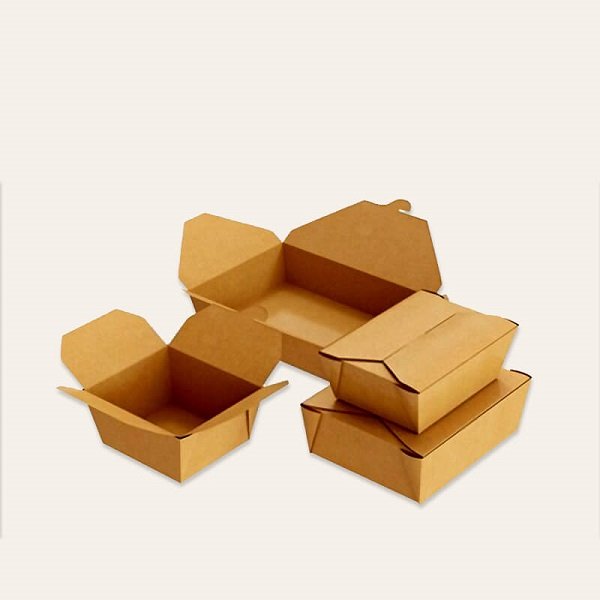Cardboard boxes are now an essential element of the packaging for food industry because of their low cost, versatility and sustainability. Extensive-ranging product offerings by food industries have necessitated the diversification of their packagings, including design and shape, to suit different customer needs highly regarding type of food and presentation, functionality, and branding. One of the most significant aspects surrounding the idea of packaging is the form of the box since it has a direct impact on the user experience and usability. The various forms of cardboard boxes are well-known across different categories of food with each having distinct advantages
Square and Rectangular Boxes
Rectangular and square boxes are among the most widely utilized shapes for food packaging. They are popular due to their ease of stacking, simplicity, and effective utilization of space. Bakery boxes, pizza boxes sandwich packs and meal kits usually employ this design. They are easy to create as well as store, ship and transport and are ideal for production in bulk. Their smooth, large surface is also ideal for branding and labeling which is important for businesses seeking to strengthen their brand’s identity.
Gable Boxes
Gable boxes stand out with their triangular-shaped tops that have a built-in handles. These boxes are well-suited for takeaway meals, children’s meals, and food presents. Their distinctive . Gable boxes are often utilized by fast food establishments as well as bakeries to pack things like cookies, pastries or meals in combos.
Round and Circular Boxes
The round cardboard boxes aren’t as popular, but they are widely used for specific food categories, specifically to package cakes, pies and a variety of cheese. These boxes improve the appearance of food items that are circular and aid in maintaining their shape. For bakery as well as gourmet packaging for food items circular boxes provide an sophisticated and elegant appearance.
Tray-Style Boxes
Tray-style cardboard boxes are made with low walls with an open lid or transparent top that makes them ideal to display foods such as pastries, sushi, cupcakes or fruit selections. They are typically used to display retail items catering services, as well as displays counters in which the aesthetic attraction of food items is essential. Certain tray-style boxes are paired with inserts or sleeves to increase protection and aesthetic value.
Tuck-End Boxes
Tuck-end boxes are square or rectangular boxes that have flaps that fold into the sides. They are commonly employed in the retail food packaging like confectionery, snacks and frozen products. They are effective in sealing and have strong structural stability. Their slim and sleek appearance makes them perfect to ship or stack on shelves.
Pillow Boxes
While they might seem odd, these box-shaped cushion is growing in demand in specialty markets, including gourmet chocolates or snacks, as well as other food-related items. Their curvaceous shape and sleek appearance add a classy look to the product.Pillow boxes are usually employed when the focus is on branding and aesthetics rather than storage space.
Hexagon and Other Custom Shapes
Custom-designed shapes such as hexagons and hearts or themed boxes are made to make a statement in a crowded market. They are particularly sought-after for packaging of food items that are limited-edition such as holiday desserts, or promotions. They enhance the user experience by making the packaging feel distinctive and memorable.
Conclusion
The shape of the cardboard boxes wholesale for food plays a crucial aspect in how food is stored, secured and displayed. From square boxes that are traditional to custom-designed designs that are unique in shape Each shape serves an important purpose and caters to various consumer needs. Businesses can pick the form that best suits their food products, while looking at branding, functionality as well as sustainability. As packaging technology continues to develop the shape of packaging remains an effective method of delivering food in practicality as well as style.
